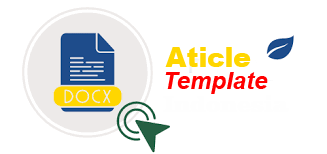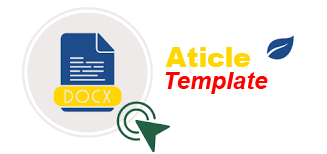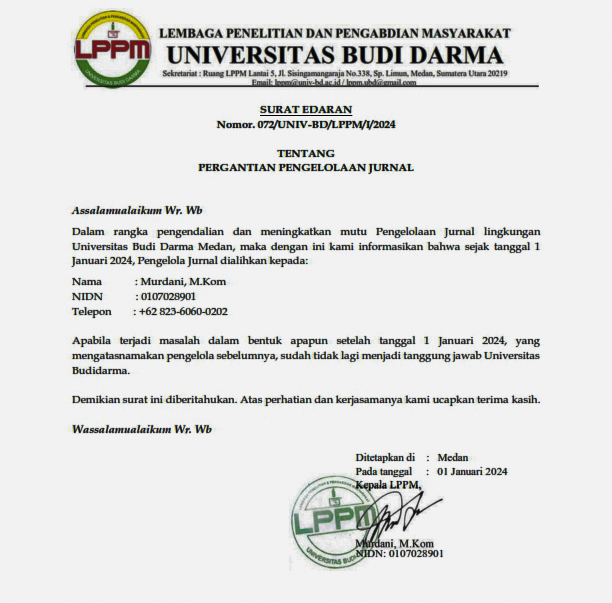Deteksi Dini Anak Disleksia dengan metode Support Vector Machine
DOI:
https://doi.org/10.30865/json.v4i1.4776Keywords:
Dyslexia, Support Vector Machine, Detection, Classification, AccuracyAbstract
Dyslexia is a brain disorder caused by genetics. People with dyslexia can live a normal life and even have certain advantages if they get the correct education. People with dyslexia often get the predicate stupid because teachers do not know the case of their students. Early detection of dyslexic children can be done with a series of tests so that the system can conclude that the data is dyslexic or not. Support Vector Machine is a data classification method to share dyslexia test results or not. This system is trained with test results data that are already available using the SVM method. This study uses gamification data to detect dyslexic children or not. SVM proves a good level of accuracy in predictions up to 94%.References
S. J. Russell and P. Norvig, Artificial intelligence, vol. 4. Pearson Education, Inc., 2010.
N. Lee, G. Márquez, J. M. Levsky, and J. K. Gohagan, “Potential of Computer-Aided Diagnosis to Improve CT Lung Cancer Screening,†IEEE Rev. Biomed. Eng., vol. 2, no. 2008, pp. 136–146, 2009, doi: 10.1109/RBME.2009.2034022.
Y. Wang et al., “Deeply-Supervised Networks with Threshold Loss for Cancer Detection in Automated Breast Ultrasound,†IEEE Trans. Med. Imaging, vol. 39, no. 4, pp. 866–876, 2020, doi: 10.1109/TMI.2019.2936500.
P. Hidayatullah, T. L. E. R. Mengko, R. Munir, and A. Barlian, “Bull Sperm Tracking and Machine Learning-Based Motility Classification,†IEEE Access, vol. 9, pp. 61159–61170, 2021, doi: 10.1109/ACCESS.2021.3074127.
S. Qi, T. Nie, Q. Li, Z. He, D. Xu, and Q. Chen, “A Sperm Cell Tracking Recognition and Classification Method,†Int. Conf. Syst. Signals, Image Process., vol. 2019-June, pp. 163–167, 2019, doi: 10.1109/IWSSIP.2019.8787312.
R. Kakadiya, R. Lemos, S. Mangalan, M. Pillai, and S. Nikam, “AI Based Automatic Robbery/Theft Detection using Smart Surveillance in Banks,†Proc. 3rd Int. Conf. Electron. Commun. Aerosp. Technol. ICECA 2019, pp. 201–204, 2019, doi: 10.1109/ICECA.2019.8822186.
F. Fanitabasi and E. Pournaras, “Appliance-Level Flexible Scheduling for Socio-Technical Smart Grid Optimization,†IEEE Access, vol. 8, pp. 119880–119898, 2020, doi: 10.1109/ACCESS.2020.3001763.
J. Han, M. Kamber, and J. Pei, Data mining: Data mining concepts and techniques. 2012.
Loeziana, “Urgensi Mengenal Ciri Disleksia,†J. Pendidik. Kegur., vol. 3, no. 2, pp. 42–58, 2017, [Online]. Available: http://jurnal.ar-raniry.ac.id/index.php/bunayya/article/download/1698/1235.
S. Shaywitz, “What is Dyslexia?,†The Yale Center For Dyslexia & Creativity, 2022. https://dyslexia.yale.edu/dyslexia/what-is-dyslexia/ (accessed Sep. 23, 2022).
L. Rello, R. Baeza-Yates, A. Ali, J. P. Bigham, and M. Serra, “Predicting risk of dyslexia with an online gamified test,†PLoS One, vol. 15, no. 12 December, pp. 1–15, 2020, doi: 10.1371/journal.pone.0241687.
C. Mejia, B. Florian, R. Vatrapu, S. Bull, S. Gomez, and R. Fabregat, “A Novel Web-Based Approach for Visualization and Inspection of Reading Difficulties on University Students,†doi: 10.1109/TLT.2016.2626292.
D. Colenbrander, J. Ricketts, and H. L. Breadmore, “Early identification of dyslexia: Understanding the issues,†Lang. Speech. Hear. Serv. Sch., vol. 49, no. 4, pp. 817–828, 2018, doi: 10.1044/2018_LSHSS-DYSLC-18-0007.
O. L. Usman, R. C. Muniyandi, K. Omar, and M. Mohamad, “Advance Machine Learning Methods for Dyslexia Biomarker Detection: A Review of Implementation Details and Challenges,†IEEE Access, vol. 9, pp. 36879–36897, 2021, doi: 10.1109/ACCESS.2021.3062709.
T. S. Kuswiyanti, S. Santoso, and F. Indriyani, “Aplikasi Pengenalan Profesi pada Anak Usia Dini Berbasis Android,†Acad. J. Comput. Sci. Res., vol. 2, no. 2, pp. 2–6, 2020, doi: 10.38101/ajcsr.v2i2.288.
J. Stein, “Why dyslexics make good coders,†Itnow, vol. 60, no. 3, pp. 58–60, 2018, doi: 10.1093/itnow/bwy081.
M. Bernardini, L. Romeo, P. Misericordia, and E. Frontoni, “Discovering the Type 2 Diabetes in Electronic Health Records Using the Sparse Balanced Support Vector Machine,†IEEE J. Biomed. Heal. Informatics, vol. 24, no. 1, pp. 235–246, 2020, doi: 10.1109/JBHI.2019.2899218.
E. Prasetyo, Data Mining, Mengolah Data Menjadi Informasi Menggunakan Matlab, 1st ed. Yogyakarta: Andi Yogyakarta, 2014.
Downloads
Published
How to Cite
Issue
Section
License

This work is licensed under a Creative Commons Attribution 4.0 International License
Authors who publish with this journal agree to the following terms:
- Authors retain copyright and grant the journal right of first publication with the work simultaneously licensed under Creative Commons Attribution 4.0 International License that allows others to share the work with an acknowledgment of the work's authorship and initial publication in this journal.
- Authors are able to enter into separate, additional contractual arrangements for the non-exclusive distribution of the journal's published version of the work (e.g., post it to an institutional repository or publish it in a book), with an acknowledgment of its initial publication in this journal.
- Authors are permitted and encouraged to post their work online (e.g., in institutional repositories or on their website) prior to and during the submission process, as it can lead to productive exchanges, as well as earlier and greater citation of published work (Refer to The Effect of Open Access).





